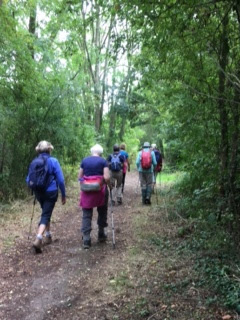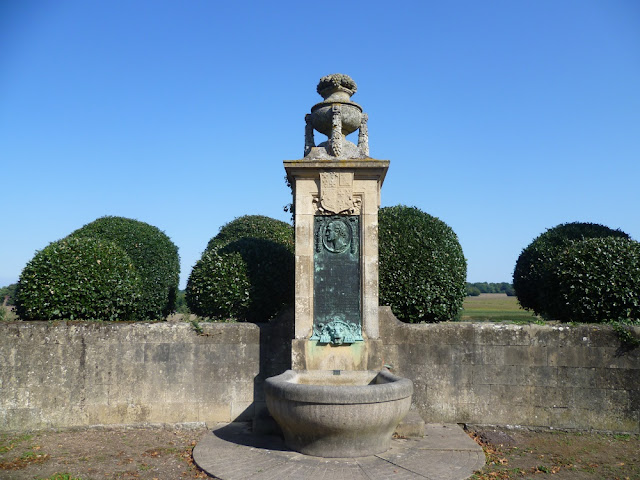Sue and Dave organised and led five walks for the Vale of Belvoir Ramblers based at the HF's Newfield Hall, a grand 19th century country house situated in the Aire Valley south of Malham in the Yorkshire Dales. Below you will find photographs taken on the longer walks.
Map of walk area - zoom in and pan for detail
Saturday 15th
Dave led the longer walk from Newfield Hall along the Pennine Way up the Aire Valley to Janet's Foss and Gordale Bridge before climbing up to the high ground below Malham Tarn. Return was past the water sinks and down Watlowes Valley to Malham Cove and Malham.
 |
| Newfield Hall, our HF base |
 |
| Our route on Saturday and Monday |
 |
| Airton Mill, originally the site of a corn mill owned by Bolton Abbey |
 |
| Overlooking Aire Head, the official source of the River Aire, Malham Cove in the distance |
 |
| Gordale Beck leading to ... |
 |
| ... Janet's Foss, named after the fairy queen who inhabits a cave at the rear of the waterfall (allegedly) |
 |
| Tricky descent down Watlowes Valley, also known as the Dry Valley, originally carved out by the glacial overspill from Malham Tarn |
 |
| Safely down Watlowes Valley but more wet limestone hazards to come |
 |
| Limestone pavement with the Cove in the background |
 |
| The base of Malham Cove |
 |
| Tea-time? at The Buck Inn, Malham |
 |
| The way back down the Aire - even the herons look wet |
Sunday 16th
Sue took charge on this very wet day taking us to Winterburn Reservoir, up the Dales High Way to Hetton Common and Calton Moor, returning along the Aire Valley.
 |
| Water above ... |
 |
| ... and below |
 |
| Winterburn Reservoir |
 |
| Liquid lunch - but not as you know it |
 |
| Heading down Calton Moor |
Monday 17th
Today's 8-mile walk took us along the Leeds and Liverpool Canal. This 127 mile canal, one of three across the Pennines, reaches a summit level of 148m. Started 1770, the main line of the canal was completed in 1816. In its early days it carried mainly coal and limestone and did not close to freight traffic until 1982.
The walk started in Gargrave, originally the site of a Roman Villa but now more famous as the junction of the canal, the Pennine Way and the A65 trans-Pennine road.
 |
| The start in Gargrave |
 |
| Gargrave Lock |
 |
| Bridge 169 |
 |
| Bridge 162 |
 |
| Towpath near the double arched bridge at East Marton, only a few metres below the canal's summit level |
 |
The end of the road - Gargrave Bridge over the Aire ...
... and the end of the road for Elaine's boot too.
|



















































